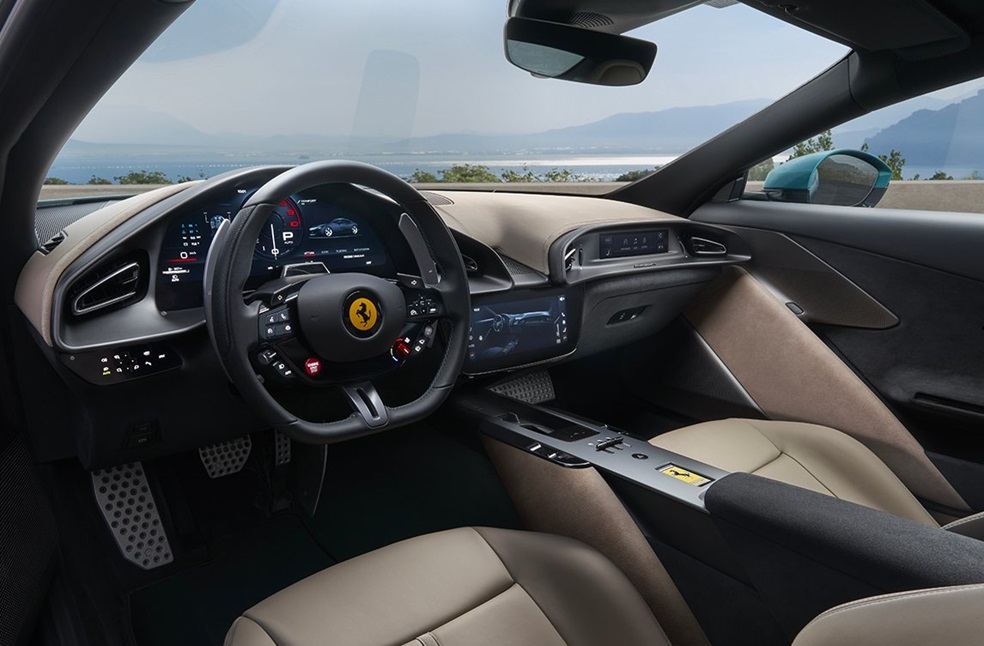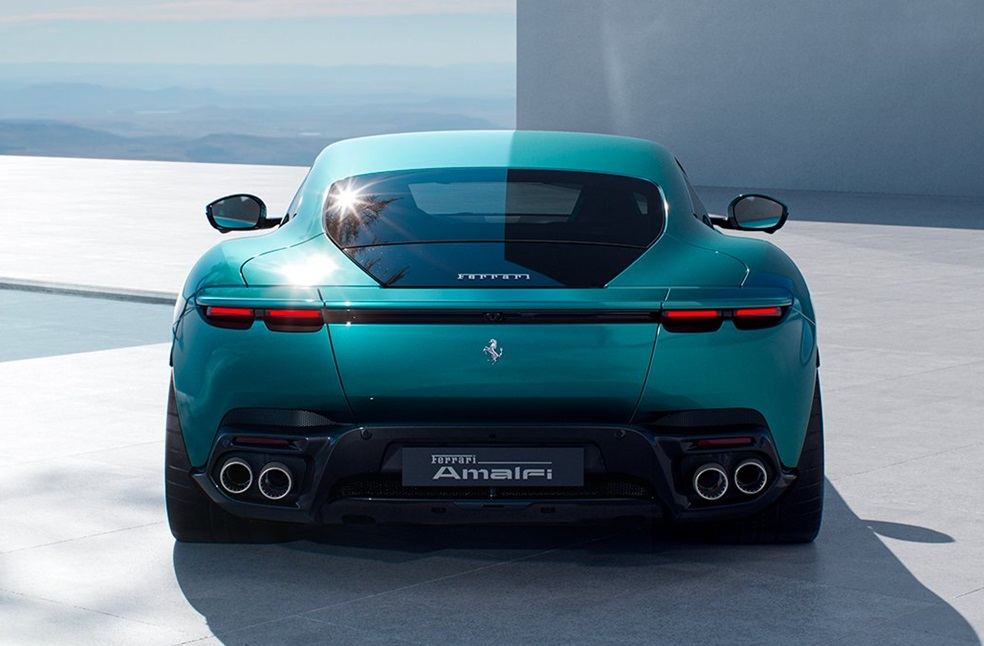Ferrari unveiled the Amalfi, its new entry-level model and successor to the Roma, on Tuesday. The Amalfi, a heavily updated evolution of its predecessor, has set a new benchmark for modern sportiness by blending refined aesthetics and high performance.
Ferrari’s Amalfi carries over the Roma’s 3.9-liter twin-turbocharged V8 engine, paired with an 8-speed dual-clutch automatic transmission. However, the front-mounted petrol unit has been upgraded to produce 640 horsepower—20 hp more than the Roma, while retaining the same peak torque of 760 Nm. To boost responsiveness, especially in higher gears, Ferrari has fitted a lighter camshaft weighing 1.3 kg, enabling the engine to rev more freely. Moreover, it also features a performance-tuned ECU, similar to that of the 12Cilindri.

The most notable change is that the Amalfi is the brand’s first model to move away from the overly complicated touch-sensitive controls that have troubled every Ferrari since the SF90 debuted in 2019. The automaker has replaced the steering wheel’s touch-capacitive controls with physical buttons for improved usability. Additionally, the touch-sensitive start button has been replaced with a left-mounted titanium switch for better feel and accessibility.
Another update is the exterior styling. Ferrari has given the Amalfi a more technical and modern front end, removing the Roma’s plastic grille and soft facial cues. While the signature shark-nose silhouette remains, the design now leans toward a sharper, more purposeful aesthetic. According to Ferrari, nearly all body panels have been redesigned, though the overall proportions and dimensions of this 2+2 coupe are unchanged.
Amalfi is equipped with Side Slip Control 6.1 software, which serves as a central hub for managing key vehicle dynamics, including steering input, suspension behavior, and yaw, to optimize grip and performance across all driving conditions.

While the vehicle is built on the Roma’s foundation, it introduces a range of advanced technologies that elevate both performance and safety. Major upgrades include a brake-by-wire system for sharper braking response, ABS Evo for consistent control across all driving modes, and a refined electric power steering setup that offers quicker, more accurate grip estimation—even on low-traction surfaces.
Complementing these enhancements, the Amalfi incorporates a diverse suite of advanced driver assistance technologies, such as Adaptive Cruise Control, Automatic Emergency Braking, Blind Spot Monitoring, Lane Keeping Assist, Rear Cross Traffic Alert, Traffic Sign Recognition, and a Surround View Monitor to improve safety.
GENERAL | Mexico to Stay Key Global Automotive Hub Despite U.S. Tariffs





